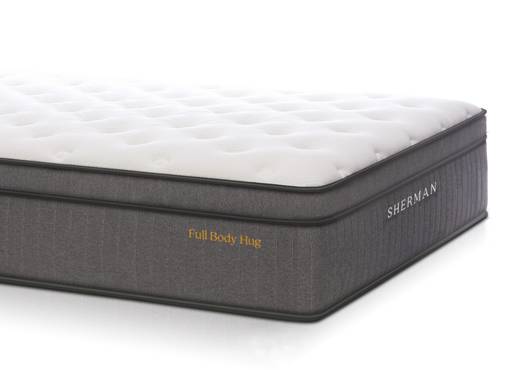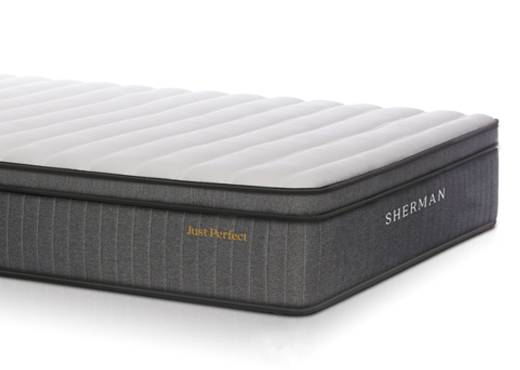Before buying a mattress, it’s important to do your research so you know you are getting a quality product that meets your needs and your budget. This means having at least a basic understanding of foam grades.
Foam is one of the most expensive parts of a mattress and it also affects your comfort more than any other component, so it makes sense to understand a little about it when you are shopping for a mattress.
You can’t really compare mattresses or pricing without knowing the foam grades in the mattress.
Ironically, you’ll find that it’s the last thing that most mattress salespeople want to tell you about.
Foam specifications are shrouded in secrecy in the Australian mattress industry. Quite often, the salesperson won’t even know the foam grades used in a mattress because the manufacturer hasn’t revealed the full specs to them.
This is crazy, right?
At Sherman, we believe in full disclosure. We reveal our full specifications to you including the layers of foam and the density ratings of each. We do this because we are extremely confident of the quality and the value in our mattresses. I would be very suspicious of any mattress store or salesperson that won’t give you all of these facts.
Understanding these foam grades is not difficult. Here’s a quick run down on the things you need to know:
Foam is made up of open cells like bubbles, inside each bubble is air. Foam, like a lot of things in life, is sold by weight (or density, technically). The quality and price of foam in Australia is measured by the density rating. This rating will also tell you vaguely how many cells the foam has, how thick the walls of each cell are and how much of the foam is made up of air. The more cells; the better. The thicker the walls of each cell; the better. The less air; the better. So, the more dense the foam; generally, the better.
As illustrated in the image, lower grade foams have very thin walls around each air bubble. As these walls break, the foam begins to collapse, leading to a loss of comfort. All foams will eventually break down, but lower grade foams will break down very quickly, sometimes within a few months of use.
The foam name can give you a vague idea of it’s grade - Latex is a high grade foam, as is Visco elastic or Memory foam. Memory foam is highly elastic, has the ability to contour extremely well to body shapes and provides superior comfort and these properties are only found in very high grade foams.
Sometimes, manufacturers make up fancy name for their foams to try to confuse you or trick you into thinking that their foam is superior. You should ignore names like “Envirofoam”, “Cloudcell” and “Endura”. These names have no bearing on the quality of the foam or how long it will stay comfortable.
Other claims such as a foam being “exclusive” to the product, also don’t really mean that the foam will bring you any extra benefit.
To really judge the quality of foam, you need to know the density rating.
In Australia, bedding foam density ratings will generally be anything between 10kg and 50kg.
Dense foam (40kg to 50kg) will last longer and retain its buoyancy and elasticity longer. This means that the foam will stay comfortable for longer.
At the other end of the scale, low density foam (10kg to 15kg) will break down and lose its comfort very quickly. You wouldn’t expect a mattress made with 10kg foam to stay comfortable for more than a few months.
When looking at foam grades, you also need to look at how thick each layer of foam is in the comfort layers. The oldest trick in the book is to list a layer of expensive, dense foam in the specifications but fail to mention how much of it there is. A layer of any foam that is less than 10mm thick is pretty much useless but manufacturers will include this just so that they can make the mattress more expensive.
Just as important is to not have too many layers of foam. A manufacturer can save money, and also “plump-up” the look of the mattress by using many thin layers of foam instead of just two or three. Beware of any mattress specifications that list more than 5 layers of foam.
In a perfect world, all mattress manufacturers and retailers would be happy to reveal how many layers of foam are in the mattress and the density rating and thickness of each layer of foam in the mattress. You would then be able to take these specifications to each mattress store and compare the value of other mattresses.
In the real world, however, you’ll find that manufacturers and retailers will go to great lengths to hide these specifications from you.
Don’t believe me? Try going into a big-brand mattress store and asking for the foam specifications in a mattress. Ask the salesperson to list the exact thickness and density rating of each layer of foam in the mattress. Even better, ask to see where the specifications are published (so that the salesperson can’t just rattle off some fictional numbers).
Or, contact that big-brand online mattress company who makes a mattress-in-a-box. Some of these newer players in the market love to shout about value, but if they won’t reveal the foam grades in the mattress, you have no way of knowing how long the mattress will last. So, you have no way of really knowing if the mattress is good value.
At Sherman, we want you to know what you’re buying. Because it’s what’s inside the mattress that really counts.
The Sherman 'Just Perfect' mattress features just two layers of foam in the comfort layers –
• A full 30mm thick layer of 40kg memory foam (a density rating of 40kg is extremely good!)
• A full 40mm layer of 22kg premium foam (also pretty good!)
You'll find all the specifications of our mattresses here, along with all the foam grades.
Go back to article: What's the best mattress?




